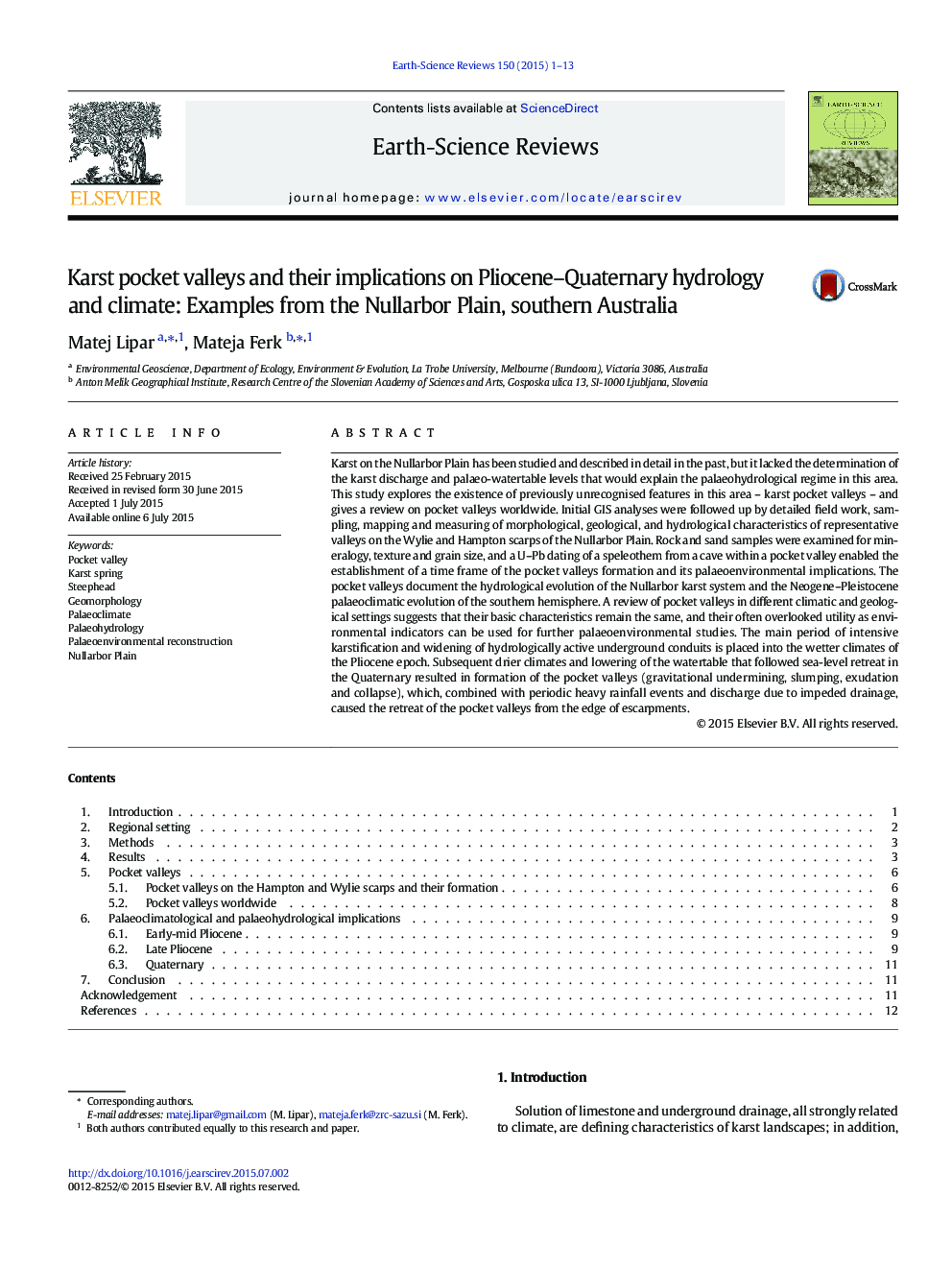| Article ID | Journal | Published Year | Pages | File Type |
|---|---|---|---|---|
| 6442891 | Earth-Science Reviews | 2015 | 13 Pages |
Abstract
Karst on the Nullarbor Plain has been studied and described in detail in the past, but it lacked the determination of the karst discharge and palaeo-watertable levels that would explain the palaeohydrological regime in this area. This study explores the existence of previously unrecognised features in this area - karst pocket valleys - and gives a review on pocket valleys worldwide. Initial GIS analyses were followed up by detailed field work, sampling, mapping and measuring of morphological, geological, and hydrological characteristics of representative valleys on the Wylie and Hampton scarps of the Nullarbor Plain. Rock and sand samples were examined for mineralogy, texture and grain size, and a U-Pb dating of a speleothem from a cave within a pocket valley enabled the establishment of a time frame of the pocket valleys formation and its palaeoenvironmental implications. The pocket valleys document the hydrological evolution of the Nullarbor karst system and the Neogene-Pleistocene palaeoclimatic evolution of the southern hemisphere. A review of pocket valleys in different climatic and geological settings suggests that their basic characteristics remain the same, and their often overlooked utility as environmental indicators can be used for further palaeoenvironmental studies. The main period of intensive karstification and widening of hydrologically active underground conduits is placed into the wetter climates of the Pliocene epoch. Subsequent drier climates and lowering of the watertable that followed sea-level retreat in the Quaternary resulted in formation of the pocket valleys (gravitational undermining, slumping, exudation and collapse), which, combined with periodic heavy rainfall events and discharge due to impeded drainage, caused the retreat of the pocket valleys from the edge of escarpments.
Keywords
Related Topics
Physical Sciences and Engineering
Earth and Planetary Sciences
Geology
Authors
Matej Lipar, Mateja Ferk,
